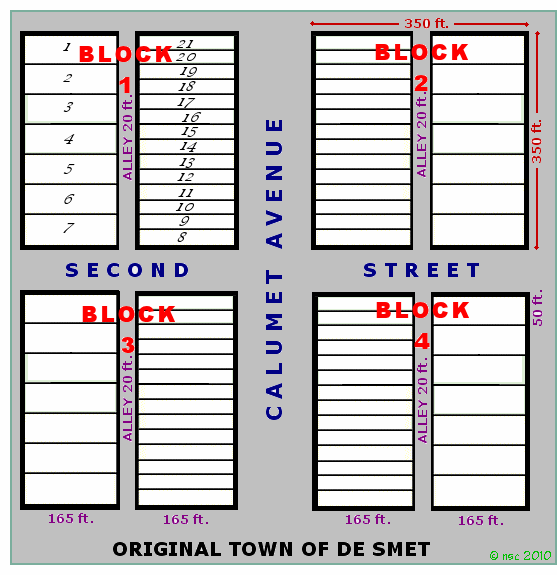alley / alleyway

A narrow passage or way in a city, as distinct from a public street. — Webster, 1882
 …Down alleys between the buildings, and beyond both ends of the street, the clean, green prairie rippled far away and quiet under the clear sky…
…Down alleys between the buildings, and beyond both ends of the street, the clean, green prairie rippled far away and quiet under the clear sky…

One of the first things Laura Ingalls notices after moving from the Surveyors’ House into the just-being-built village of De Smet, is the alleys, littered with shavings and sawdust. She looks past them to the clean, green untouched prairie lying beyond.
In De Smet, the original town was laid out in 1880 with four blocks, each divided into 21 lots. Single lots were 25 feet wide and 165 feet deep; double lots were 50 feet wide. In each block, a 20 foot wide alley separated the lots at the rear, running north and south. Barns and sheds were usually built close to the alleys and were used for deliveries and access to the rear of stores and early homes. According to the Kingsbury County News, the alleys were still littered in 1885, and owners were warned to “Clean up your alleys or suffer the penalties!” Street Commissioner Edward Couse was still warning owners to clean their alleys in subsequent years, saying that they were a disgrace to the city, being clogged with filth, manure, and rubbish. For many years, a contest was held to judge which block in town was the prettiest and nicest kept, and a main criteria for judgement was condition of alleys!
Did you notice the button image? It’s of the alley in Block 2 in De Smet today, taken looking south.

alley (SSL 27)
alleyway (FB 2)

